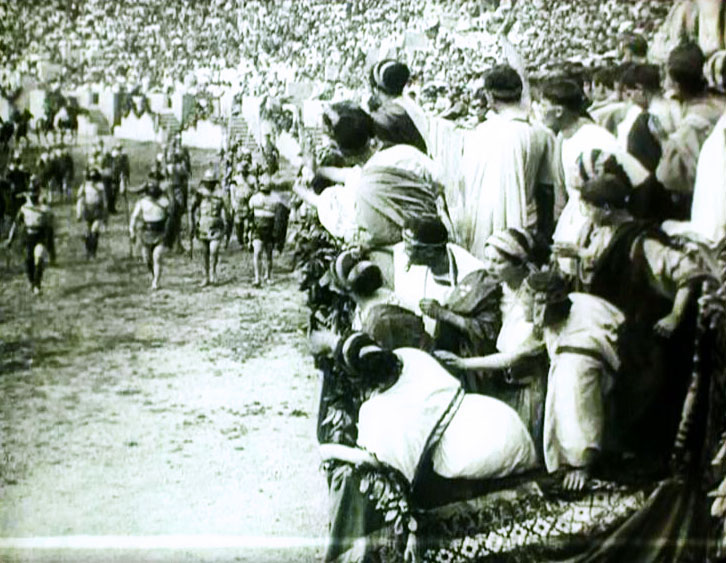Early Movie Genres – Part 2 of 12
Between 1911 and 1919, Italy was home to the first avant-garde movement in cinema, inspired by the country’s Futurism movement. The 1916 Manifesto of Futuristic Cinematography was signed by Filippo Marinetti, Armando Ginna, Bruno Corra, Giacomo Balla and others. To the Futurists, cinema was an ideal art form, being a fresh medium and able to be manipulated by speed, special effects and editing.
Thaïs, by Anton Giulio Bragaglia was one of the most influential films of the Futurism genre and served as the major inspiration for Expressionist cinema that proliferated in northern Europe during the following decade. Released in 1917, it is the only surviving Italian futurist film. The plot consisted of a fairly conventional tragic drama – a beautiful countess bent on seducing married men, would drive them to the brink of ruin. Eventually her evil ways resulted in the death of her best friend and in a fit of guilt, the countless kills herself. What set the film apart was its set designs and cinematography. Designer Enrico Prampolini employed a strong black and white contrast, using geometric shapes within the form of spirals, diamond and checks with symbolic figures, including cats, masks and lots of spewing smoke. The film’s characters interacted with the painted scenery to create a world of illusion, making it difficult for the viewer to distinguish reality from fantasy. As the film progresses, it becomes more and more abstract to reflect the countess’ increasing confusion.
Two of the most successful silent films of the period were released in 1913 – Mario Caserini’s The Last Days of Pompeii and Enrico Guazzone’s Quo Vadis. Pompeii is regarded as the first movie about a disaster and utilized thousands of extras as well as lavish set designs. Quo Vadis was revolutionary in its innovative visual effects.
The following year, Nino Martoglio released Lost in Darkness. The film documented life in the slums of Naples. It is considered to be the precursor to the Neorealist movement of the 1940s and 1950s. As acclaimed and influential as these films were, the real money makers in the industry were the “society dramas.” With their melodramatic themes and passionate emotional acting, these silent films marked the birth of the Italian femme fatale and made stars of the actresses who played them. The genre gave rise to the popularity of the lingering close-up shot, which was emulated throughout Europe. The most famous Italian diva of the time was Eleonora Duse, who in 1923, became the first woman and the first Italian to be featured on the cover of the newly-created Time magazine.
The Italian film industry struggled against rising foreign competition in the years following World War I. Several major studios, among them Cines and Ambrosio, formed the Unione Cinematografica Italiana to create a more effective method to produce and distribute films. It didn’t work. There was an enormous disconnect between the production of the movies and actually getting the features into theaters. In some cases, films were not released until several years after they had been produced. Among the notable Italian movies of the late silent era were Mario Camerini’s Rotaio and Alessandro Blasetti’s Sun, both in 1929.
After this period of decline, the Italian film industry was revitalized in the 1930s with the arrival of sound. A popular Italian genre during this period, the Telefoni Bianchi were comedies in the style of Hollywood productions, using against lavish Art Deco sets and almost always featuring white phones – a status symbol of the time and generally unavailable to the movie-going public. Important examples of Telefoni Bianchi include Guido Brignone’s Paradiso (1932), Carlo Bragaglia’s O la borsa o la vita (1933) and Righelli’s Together in the Dark (1935).
The Telefoni Bianchi films tended to be socially conservative, promoting family values and respect for authority. This was perfectly in line with the Fascist government ideals. The government provided financial support for the film industry, most notably the construction of the Cinecittà studios, but it also engaged in censorship and many Italian films produced of the late 1930s were propaganda films.





